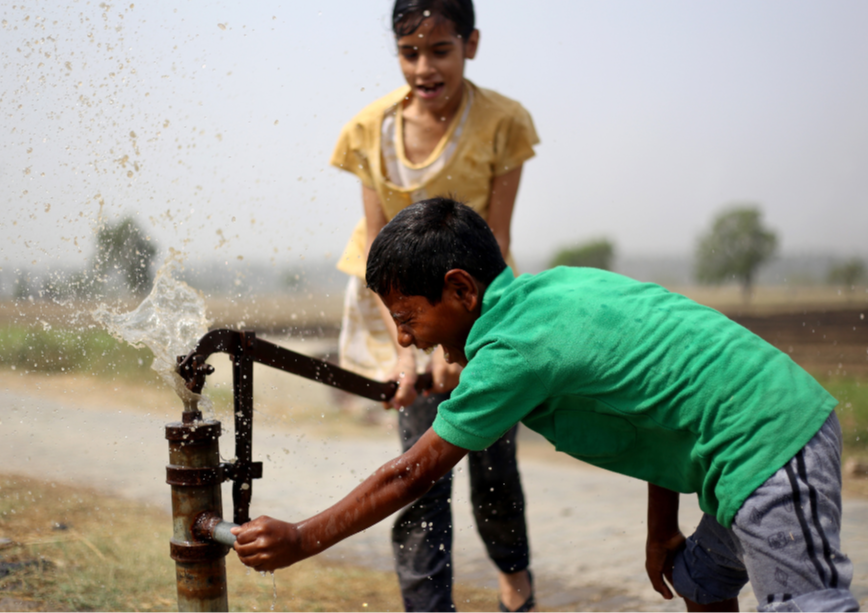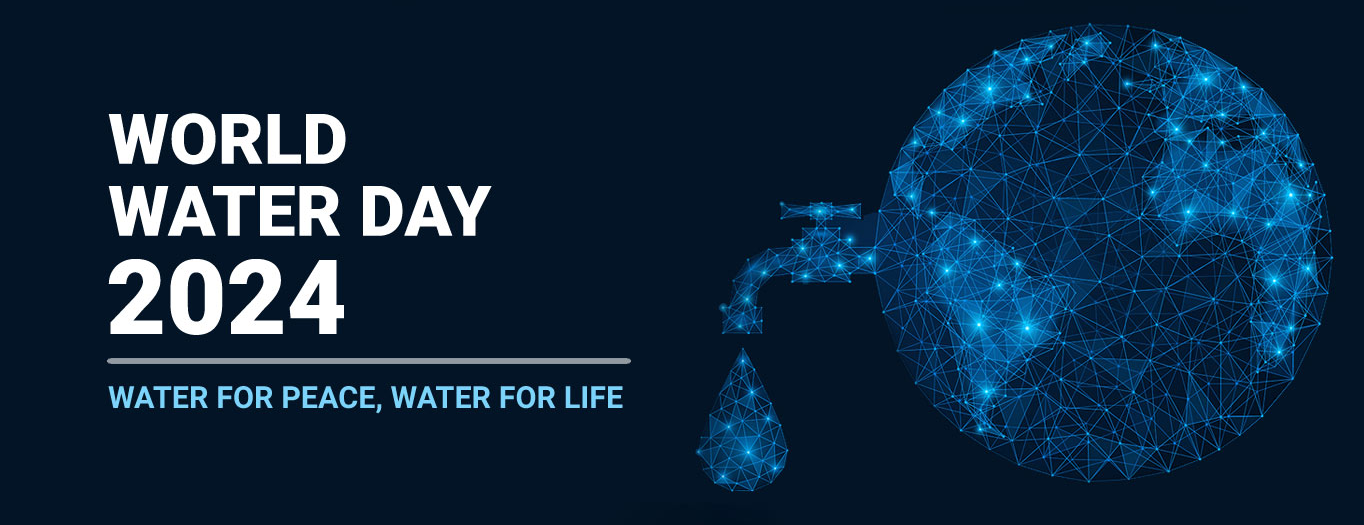
This article is a part of the essay series: World Water Day 2024: Water for Peace, Water for Life
Water scarcity looms large over India, particularly during the dry season, painting a grim picture of the country's future water availability. The annual per capita water availability, projected to be 1,486m3 in 2021, is set to decline further to 1,367m3 by 2031. Alarming as it is, this figure falls significantly below the global average of 5,500m3 per capita, indicating a trajectory towards severe water scarcity. With 16-17 percent of the world's population residing in India and possessing only 4 percent of global freshwater resources, the nation faces a water crisis that demands urgent attention.
At the time of writing this article, Bengaluru, the capital of Karnataka, is currently facing a severe water shortage, which has been attributed to the worst drought in four decades. The state government highlighted the critical situation, revealing that 6,900 out of 13,900 borewells in the city have dried up, intensifying the crisis. This scarcity has impacted various sectors, including large apartments, gated communities, schools, fire brigades, hotels, etc. Residents, especially those in independent houses, are concerned about the Bangalore Water Supply and Sewerage Board's ban on using potable water for non-essential purposes. The crisis has led to citizens facing challenges such as disposable utensil shortages due to rising tanker prices, emphasising the widespread impact on basic water needs.
Water scarcity in India is marked by enormous demand-supply gaps, inefficient water resource management, and the impact of climate change. Furthermore, a disparity in water pricing across states has resulted in low revenue collection, especially under irrigation water charges. The water demand-supply gap in India manifests itself in three dimensions. Firstly, the seasonality of annual water availability creates a prominent disparity, with dry season availability significantly lesser than demand. Secondly, urbanisation, population growth in the long term, and emerging water needs contribute to sustained demand pressures.
These factors, coupled with climate change and declining per-capita availability, present formidable challenges. Lastly, a substantial spatial disparity in water availability across regions exacerbates the crisis, with specific areas endowed with greater water resources than others.
Indian agriculture: A nexus of challenges
India is the world's second-largest producer in terms of farm output, underscoring the critical role of water in agriculture, which employs approximately 70 percent of the population. The heavy reliance on monsoons for 55 percent of arable land makes the water supply susceptible to droughts, impacting agricultural productivity. Droughts, increasing in frequency, pose a significant threat to water security, leading to overuse and depletion of groundwater resources. Therefore, improving water management practices in agriculture is pivotal to addressing the ongoing water crisis.
The need to address India's agricultural water-use inefficiency highlights the importance of addressing both the overexploitation of groundwater resources and ineffective irrigation systems. The climate crisis further complicates the heavy reliance on monsoons for water supply. To effectively tackle this challenge, urgent and substantial changes to the water availability systems are imperative. The variability in water tariff rates across major Indian metropolitan cities, as illustrated in the table below, underscores the absence of a standardised tariff system, with significant price variations among different cities.
Table 1: Water Tariff in Major Indian Cities
|
CITY
|
RATE
|
|
Delhi
|
Monthly Consumption (kilolitre)
|
Service Charge (INR)
|
Volumetric Charge (INR per kilolitre)
|
|
0-10
|
66.55
|
2.66
|
|
10-20
|
133.1
|
3.99
|
|
20-30
|
199.65
|
19.97
|
|
>30
|
266.2
|
33.28
|
|
Plus sewer maintenance charge: 60% of water volumetric charge
|
|
Ahmedabad
|
INR 56.59 (INR 37.96 + INR 18.63)
|
|
Mumbai
|
INR 6.9/kilolitre
|
|
Kolkata
|
INR 6.0/kilolitre
|
|
Chennai
|
Quantity of water (kilolitre)
|
Rate/kl (INR)
|
Minimum Rate Chargeable (including other charges, INR)
|
|
Upto 10
|
5
|
INR 84 per month per dwelling unit
|
|
11 to 15
|
17
|
|
|
16 to 25
|
26
|
|
Above 25
|
42
|
|
Bengaluru
|
Slab (kilolitres)
|
Water Tariff (INR)
|
Sanitary (INR)
|
|
0-8000
|
7
|
14
|
|
8001-25000
|
11
|
25%
|
|
25001-50000
|
26
|
|
Above 50000
|
45
|
|
Hyderabad
|
Slab (kilolitres)
|
Tariff (INR)
|
Sewerage Cess Charges
|
|
0-15
|
7
|
35%
|
|
0-15
|
10
|
|
16-30
|
12
|
|
31-50
|
22
|
|
51-100
|
27
|
|
101-200
|
35
|
|
>200
|
40
|
|
Surat
|
Carpet Area (in square metres)
|
Annual Water and Sewerage Charges Per Family (INR)
|
|
0-15
|
348
|
|
16-25
|
600
|
|
26-50
|
960
|
|
51-100
|
1440
|
|
101-200
|
2100
|
|
201 -500
|
3750
|
|
501 and above
|
7500
|
Source: Authors’ own, data from various sources.
Government initiatives and holistic water management
Recognising the pressing need for sustainable water management, the Indian government took a significant step in 2019 by establishing the Ministry of Jal Shakti. This ministry has actively implemented various initiatives such as the Sahi Fasal Campaign, Pradhan Mantri Krishi Sinchayee Yojana, Micro Irrigation Fund, Atal Bhujal Yojana, the Water Resources Information System, and the National Water Mission. These programmes aim to improve irrigation efficiency and encourage optimal utilisation of water resources.
In the policy discourse surrounding water governance and existing programmes, water pricing emerges as a crucial consideration. The significance of water valuation and pricing extends beyond mere user-cost coverage. It is essential to recognise that diverting each drop of water from its natural flow deteriorates the flow regime and leads to massive losses in ecosystem services provided by water. Consequently, a holistic approach to pricing is necessary, encompassing specific values which can be quantitatively and qualitatively identified.
The pricing framework should comprehensively cover capital expenditure, operations, maintenance, and the externality cost associated with ecosystem service losses.
Finally, India's historical inclination to address water deficits by focusing on supply-side parameters, leading to the overutilisation of groundwater resources, underscores the urgency of implementing a stringent water tariff system nationwide. It is crucial to underscore that the effectiveness of a regulatory body hinges on establishing a robust, inflexible and uniform pricing mechanism that helps sustainably manage the depleting resource accurately.
(Note:For a more detailed analysis, please see ORF Occasional Paper No. 422 “Water Valuation and Pricing in India: Imperatives for Sustainable Water Governance”)
Soumya Bhowmick is an Associate Fellow at the Observer Research Foundation.
The views expressed above belong to the author(s). ORF research and analyses now available on Telegram! Click here to access our curated content — blogs, longforms and interviews.




 PREV
PREV



